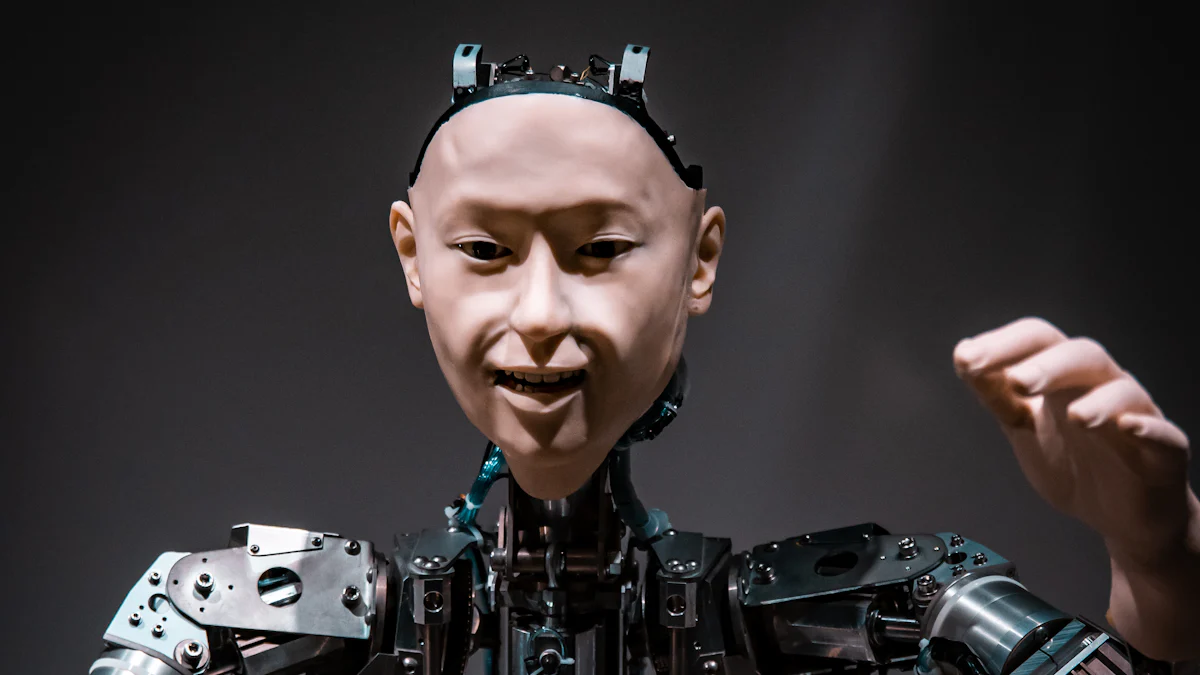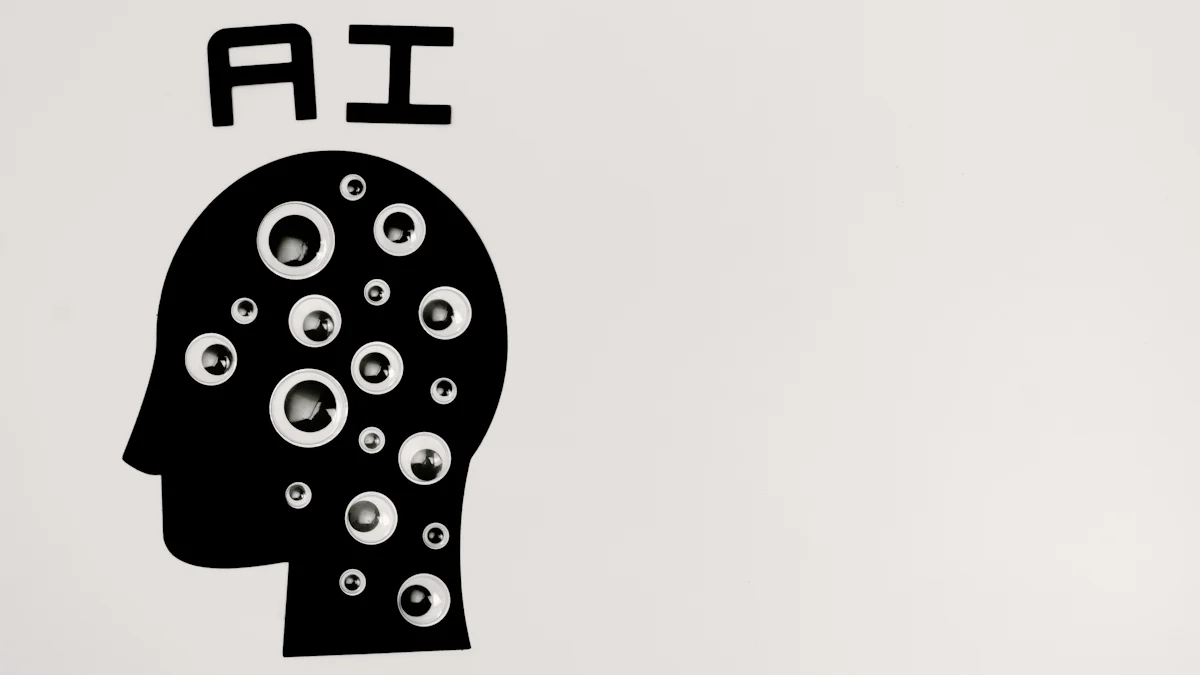
AI image optimization automates the enhancement of images. This technology reduces manual editing and improves efficiency. AI can enhance image quality and reduce imperfections better than traditional methods. The history of image optimization shows a shift from manual to automated processes. AI now plays a crucial role in modern image processing. AI optimizes images for size, format, relevance, and user appeal. AI enhances accuracy in image tags and generates effective alt text. How AI is Revolutionizing Image Conversion Techniques showcases the power of AI in transforming visual content.
Understanding AI Image Optimization
What is AI Image Optimization?
Definition and Key Concepts
AI image optimization refers to the use of artificial intelligence to enhance and improve images. AI algorithms analyze images to optimize quality, size, and format. The process involves automating tasks that traditionally required manual effort. AI identifies patterns and details in images to make precise adjustments. This technology enhances colors, sharpness, and resolution without losing quality. AI image optimization ensures images load quickly and maintain high visual standards.
How It Differs from Traditional Methods
Traditional image optimization methods rely on manual editing. These methods often involve time-consuming processes. Human error can affect the quality of manually optimized images. AI image optimization automates these tasks, reducing the need for manual intervention. AI analyzes large datasets to determine optimal settings for each image. This results in enhanced quality and faster loading times. Traditional methods struggle to improve quality without increasing file size. AI achieves this balance efficiently, enhancing user experience.
Importance of AI in Image Optimization
Benefits for Businesses and Individuals
AI image optimization offers significant benefits for both businesses and individuals. Businesses can improve website performance with faster-loading images. This leads to better user engagement and higher conversion rates. AI tools reduce the time and effort needed for image editing. Individuals benefit from enhanced image quality for personal projects. AI provides automated solutions that save time and resources.
Impact on User Experience and Engagement
AI image optimization plays a crucial role in improving user experience. Faster-loading images enhance website performance and user satisfaction. High-quality visuals attract and retain users' attention. AI ensures images are optimized for various devices and platforms. This consistency improves accessibility and engagement. Users enjoy seamless experiences with well-optimized images. AI-driven enhancements lead to more positive interactions and increased engagement.
How AI is Revolutionizing Image Conversion Techniques

How AI is Revolutionizing Image Conversion Techniques
AI Algorithms and Neural Networks
AI algorithms now play a vital role in image conversion techniques. These algorithms can perform tasks like object detection and scene recognition. Such capabilities enhance the efficiency of image optimization processes. AI tools streamline workflows by automating complex tasks. This automation leads to improved image quality and reduced imperfections. Traditional methods often struggle with these challenges.
Neural networks contribute significantly to AI image conversion. These networks analyze vast datasets to learn patterns and textures. This learning allows AI to make precise adjustments to images. The adjustments improve colors, sharpness, and resolution. AI-powered tools categorize visual data intelligently. These tools extract nuanced information from images. The insights provided by AI converters reshape digital toolkits for creators.
Enhancements in Image Quality and Efficiency
AI enhances image quality by optimizing various elements. AI technology optimizes images for relevance and user appeal. Enhancements include better image tags and strategic keywords. AI generates effective alt text for search engines and users. These improvements make content more discoverable online. AI-driven advancements improve the accuracy of image recognition.
Efficiency gains from AI are substantial. AI reduces the time needed for manual editing. Automated solutions save resources for businesses and individuals. Faster loading images improve website performance. High-quality visuals attract and retain user attention. AI ensures images maintain high standards across devices. Consistent optimization enhances user experience and engagement.
Tools and Technologies for AI Image Optimization
Popular AI Tools
Overview of Leading AI Image Optimization Tools
AI tools transform image optimization processes. Adobe Photoshop offers a comprehensive suite of editing tools. Neural filters and content-aware fill features enhance images with precision. Luminar Neo caters to photographers with AI Sky Replacement and AI Structure. These features simplify image enhancement tasks. Canva serves marketers and content creators. AI-powered features optimize images for various formats. Topaz Labs provides innovative tools for image enhancement. AI upscale capabilities improve image resolution and quality.
Comparison of Features and Capabilities
Each AI tool offers unique features. Adobe Photoshop excels in detailed editing and sophisticated enhancements. Luminar Neo focuses on ease of use for photographers. AI-driven features allow quick adjustments. Canva integrates design and optimization functions. This versatility benefits content creators. Topaz Labs specializes in image enhancement and upscaling. Users select tools based on specific needs and preferences. Feature comparison guides informed decisions.
Emerging Technologies
Machine Learning and Deep Learning Applications
Machine learning and deep learning drive AI advancements. These technologies analyze vast datasets. Patterns and textures in images become recognizable. AI tools apply learned insights to optimize images. Machine learning enhances image recognition accuracy. Deep learning improves color correction and sharpness. AI applications streamline complex tasks. Automated solutions reduce manual editing efforts.
Future Trends in AI Image Optimization
Future trends indicate continued AI evolution. AI tools will integrate more advanced algorithms. Image optimization processes will become more efficient. Real-time enhancements will gain popularity. Users will experience seamless optimization across devices. AI will offer personalized recommendations. These suggestions will improve user experience. Future developments promise greater accessibility and engagement.
Techniques and Methods
Step-by-Step Guide to AI Image Optimization
Preparing Images for Optimization
Begin the optimization process by selecting high-quality images. High-resolution images provide a better foundation for enhancement. Use software to check image dimensions and file formats. Ensure that images are in a compatible format like JPEG or PNG. Compress images to reduce file size without losing quality. Smaller files load faster, improving website performance.
Organize images into categories based on their purpose. Group similar images together for consistent optimization. Use descriptive filenames for easy identification. Proper naming conventions help with search engine optimization (SEO). Add relevant metadata to each image. Metadata includes alt text and keywords that improve discoverability.
Applying AI Techniques for Enhancement
AI tools analyze images to identify areas for improvement. Use AI algorithms to enhance colors and sharpness. AI adjusts brightness and contrast for optimal visual appeal. Apply AI-driven filters to remove imperfections. Filters correct issues like noise and blurriness.
Leverage AI for automatic tagging and categorization. AI recognizes objects and scenes within images. This recognition aids in generating accurate alt text. Alt text improves accessibility and SEO performance. AI tools offer personalized recommendations for optimization. Follow these suggestions to achieve the best results.
Best Practices
Tips for Achieving Optimal Results
Select AI tools that align with your specific needs. Research features and capabilities of different software options. Experiment with various settings to find the best fit. Regularly update AI tools to access new features. Stay informed about advancements in AI technology.
Monitor the performance of optimized images. Analyze metrics like loading times and user engagement. Use feedback to refine optimization strategies. Consistent evaluation ensures continued success. Share insights and learnings with peers and colleagues.
Common Pitfalls to Avoid
Avoid over-reliance on automation. Manual review remains important for quality assurance. Check AI-generated tags and descriptions for accuracy. Ensure that images maintain their original intent and context. Avoid excessive compression that degrades image quality. Balance file size reduction with visual integrity.
Stay aware of ethical considerations in AI usage. Respect privacy and copyright laws when using AI tools. Ensure transparency in how AI processes images. Address any potential biases in AI algorithms. Responsible use of AI fosters trust and credibility.
Case Studies and Examples

Real-World Applications
Success Stories from Various Industries
E-commerce Platforms have successfully used AI image optimization to enhance product images. Businesses have seen increased conversion rates and improved user experience. AI tools analyze product images to optimize lighting, color, and clarity. Customers find these enhanced images more appealing and trustworthy. Improved visuals lead to higher engagement and sales.
Healthcare has also benefited from AI image optimization. Medical professionals use AI to improve the quality of diagnostic images. Enhanced images provide clearer insights into patient conditions. This leads to more accurate diagnoses and better treatment plans. AI technology supports healthcare providers in delivering superior care.
Real Estate companies use AI to optimize property images. AI tools enhance photos by adjusting brightness and contrast. Potential buyers find these images more attractive. Enhanced visuals increase interest in properties and drive sales. Real estate agents report higher engagement with optimized listings.
Lessons Learned and Key Takeaways
AI image optimization offers valuable lessons for businesses. Companies need to invest in the right tools to achieve optimal results. Understanding the specific needs of each industry is crucial. Tailored solutions lead to better outcomes and increased efficiency. Businesses should regularly update AI tools to access new features. Staying informed about advancements ensures continued success.
Practical Examples
Before and After Comparisons
Before AI optimization, images often lack clarity and vibrancy. Colors appear dull, and details may be obscured. AI tools transform these images by enhancing brightness and sharpness. The difference becomes evident in before and after comparisons. Enhanced images capture attention and convey professionalism.
For example, a fashion retailer uses AI to optimize clothing images. Before optimization, colors appear muted, and fabrics lack texture. AI tools enhance these elements, making clothes look more appealing. Customers respond positively to the improved visuals. Sales increase as a result of the enhanced presentation.
Demonstrations of AI Tools in Action
AI tools offer demonstrations that showcase their capabilities. Users can see how AI enhances images in real-time. These demonstrations highlight the ease and efficiency of AI solutions. AI tools adjust lighting, remove imperfections, and enhance resolution. Users gain confidence in the technology through practical examples.
For instance, an AI-powered photo editor demonstrates its features. Users upload an image and watch as AI optimizes it. The tool adjusts colors, sharpness, and contrast automatically. The final result impresses users with its quality and precision. Such demonstrations encourage adoption of AI technology across industries.
AI image optimization transforms the digital landscape. Businesses and individuals benefit from improved image quality and efficiency. AI tools automate complex tasks, enhancing user experience and engagement. The future of AI image optimization promises more advanced algorithms. Real-time enhancements will become standard. Users will enjoy seamless optimization across devices.
Ethical considerations remain crucial. Developers must ensure fairness and transparency in AI systems. Establishing ethical guidelines prevents misuse of AI-generated content. Addressing biases builds trust and credibility in AI applications. Users should stay informed about advancements and ethical practices.